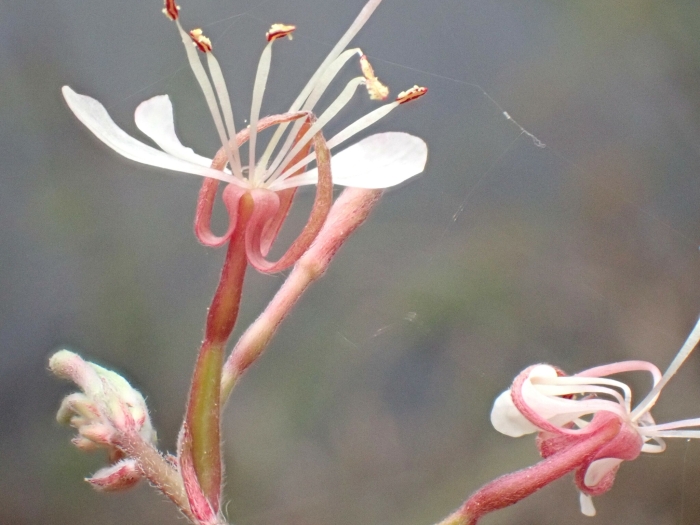Southern Beeblossom
(Oenothera simulans)
Southern Beeblossom (Oenothera simulans)
/
/

mfeaver
CC BY 4.0
Image By:
mfeaver
Recorded By:
Copyright:
CC BY 4.0
Copyright Notice:
Photo by: mfeaver | License Type: CC BY 4.0 | License URL: http://creativecommons.org/licenses/by/4.0/ | Rights Holder: mfeaver | Publisher: iNaturalist | Date Created: 2024-03-08T15:01:04-08:00 |























Estimated Native Range
Summary
Oenothera simulans, commonly known as Southern Beeblossom, is an annual herb that is native to the southeastern United States and the Bahamas, where it thrives in a variety of habitats including coastal dunes, open woodlands, fields, and roadsides. It is particularly well-adapted to disturbed areas, often colonizing open spaces with sandy soils. Southern Beeblossom can reach heights of up to 6 feet (1.8 meters) and is characterized by its slender, erect stems and branching habit.
The plant is known for its delicate, white to pink flowers that bloom from late spring to early fall, attracting a host of pollinators such as bees, butterflies, and moths. The flowers are typically open in the evening and close by the next afternoon, a trait common to many Oenothera species. Southern Beeblossom is valued for its ornamental qualities and its ability to attract wildlife, making it a suitable choice for wildflower gardens, pollinator gardens, and naturalized areas. It requires minimal maintenance once established, tolerating drought and poor soils. However, it does best in well-drained soils with full sun exposure. While generally not prone to serious pests or diseases, it can be susceptible to root rot in poorly drained conditions. Southern Beeblossom is not known to be invasive, but its self-seeding habit can lead to spreading in garden settings if not managed.CC BY-SA 4.0
The plant is known for its delicate, white to pink flowers that bloom from late spring to early fall, attracting a host of pollinators such as bees, butterflies, and moths. The flowers are typically open in the evening and close by the next afternoon, a trait common to many Oenothera species. Southern Beeblossom is valued for its ornamental qualities and its ability to attract wildlife, making it a suitable choice for wildflower gardens, pollinator gardens, and naturalized areas. It requires minimal maintenance once established, tolerating drought and poor soils. However, it does best in well-drained soils with full sun exposure. While generally not prone to serious pests or diseases, it can be susceptible to root rot in poorly drained conditions. Southern Beeblossom is not known to be invasive, but its self-seeding habit can lead to spreading in garden settings if not managed.CC BY-SA 4.0
Plant Description
- Plant Type: Herb
- Height: 0.5-2 feet
- Width: 0.5-1.5 feet
- Growth Rate: Rapid
- Flower Color: Pink, White
- Flowering Season: Spring, Summer, Fall
- Leaf Retention:
Growth Requirements
- Sun: Full Sun
- Water: Low
- Drainage: Fast
Common Uses
Bird Garden, Butterfly Garden, Deer Resistant, Drought Tolerant, Low Maintenance, Rock Garden, Salt Tolerant
Natural Habitat
Native to coastal dunes, open woodlands, fields, and roadsides in the southeastern United States and the Bahamas
Other Names
Common Names: Suncups, Evening Primrose
Scientific Names: , Oenothera simulans, Gaura angustifolia, Gaura angustifolia var. eatonii, Gaura angustifolia var. simulans, Gaura angustifolia var. strigosa, Gaura angustifolia var. typica, Gaura eatonii, Gaura fruticosa, Gaura simulans
GBIF Accepted Name: